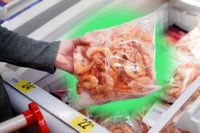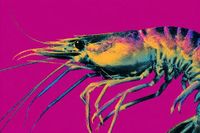When Americans scan their grocery lists for potential hazards, they’re usually on the lookout for the likes of Salmonella or Listeria—maybe E. coli, if they’re especially cautious. But this week, an unexpected term has entered the national food safety conversation: radioactive shrimp. On August 19, 2025, the U.S. Food and Drug Administration (FDA) issued a consumer alert and recall for three specific lots of Great Value raw frozen shrimp, citing concerns over possible radioactive contamination. The culprit? Cesium-137, a man-made radioactive isotope known for its ties to nuclear detonations and accidents.
The recall, which sent shockwaves through seafood aisles and sparked a flurry of freezer checks, covers shrimp with lot codes 8005540-1, 8005538-1, and 8005539-1, all stamped with a best-by date of March 15, 2027. According to the FDA, these products were distributed in Walmart stores across thirteen states: Alabama, Arkansas, Florida, Georgia, Kentucky, Louisiana, Missouri, Mississippi, Ohio, Oklahoma, Pennsylvania, Texas, and West Virginia. If you recently bought shrimp in any of these states, it’s time to check your freezer.
So how did radioactive material end up associated with shrimp in the first place? The story begins at U.S. ports, where every cargo container—no matter how innocuous—passes through radiation monitors. Earlier this year, alarms sounded at four major entry points: Los Angeles, Houston, Miami, and Savannah. The sensors flagged several shipments of Indonesian shrimp, leading to detentions and further laboratory testing. What they found was Cesium-137 at approximately 68 becquerels per kilogram in some detained samples. While this is far below the FDA’s Derived Intervention Level of 1,200 Bq/kg, it was enough to raise concern among regulators and food safety experts alike.
Tracing the shrimp back through import records, the FDA identified the Indonesian processor PT Bahari Makmur Sejati (BMS Foods) as the source. All three recalled lots had been handled together by BMS Foods, which complicated efforts to pinpoint exactly where and how the contamination occurred. As a result, the FDA couldn’t guarantee that none of the product entering commerce had come into contact with Cesium-137, whether in port, during shipping, or at the processing facility. Rather than gamble with public health, the agency issued a nationwide alert, placed BMS Foods on Import Alert 99-51 (the so-called "red list"), and blocked all future shipments from the company until the root cause is identified and addressed.
Walmart, for its part, responded swiftly to the FDA’s guidance. The retailer halted the sale of the affected shrimp, removed the products from shelves, and offered refunds to customers. "We take consumer safety seriously and are working closely with our supplier and the FDA to resolve the situation," a Walmart spokesperson stated, according to reporting from multiple outlets including AINVEST and Slate. Customers are advised to discard any shrimp matching the recalled lot codes, keep the packaging for a refund, and wipe down their freezer shelves with warm, soapy water to avoid any lingering contamination.
But what exactly is Cesium-137, and why is its presence in food such a big deal? As explained by Suresh Pillai, director of the National Center for Electron Beam Research at Texas A&M University, Cesium-137 is a radioactive byproduct of nuclear fission, released into the environment through weapons testing in the mid-20th century and accidents like Chernobyl and Fukushima. It dissolves easily in water, enabling it to travel widely through the environment. While trace amounts can be detected in soil, rain, and even the air, "it should not show up in food," Pillai told Slate. "It is strange."
At the levels found in the detained shrimp—68 becquerels per kilogram—there’s no immediate, acute health risk. The FDA stated, "At this level, the product would not pose an acute hazard to consumers." However, the long-term risks associated with repeated low-dose exposure, especially the potential for increased cancer risk, prompted the agency’s precautionary measures. Chronic consumption of food contaminated with Cesium-137, even at low levels, could damage cells over time. For this reason, the FDA’s stance is clear: err on the side of caution.
The source of the contamination remains a mystery. The FDA’s announcement noted the shrimp "appears to have been prepared, packed, or held under insanitary conditions whereby it may have become contaminated." Was the isotope present in the water where the shrimp were farmed? Did it settle on containers during shipping? Or did it enter the supply chain during processing? The FDA is now working closely with Indonesian regulatory authorities to investigate all possibilities, while food safety experts keep a watchful eye on the situation.
One thing is certain: the detection of Cesium-137 in imported shrimp is a testament to how far food safety technology has come. "Only 10, 15 years ago, they would not have detected it because the analytical instruments were not as sensitive," Pillai observed. The fact that U.S. port monitors caught these low levels is, if nothing else, a reassuring sign that American consumers are protected by robust screening protocols.
For consumers, the guidance is straightforward. If you find a bag of Great Value raw frozen shrimp with one of the recalled lot codes and a best-by date of March 15, 2027, don’t eat it. Seal the shrimp in a plastic bag and dispose of it in household trash. Save the empty package for a refund at Walmart or through the retailer’s hotline. And, just to be safe, clean your freezer shelf to remove any lingering juices.
The incident has also sparked broader conversations about the safety of imported foods and the challenges of monitoring global supply chains. As AINVEST noted, the situation underscores "the importance of stringent food safety measures and international cooperation in global food supply chains." The FDA’s decisive action—blocking further imports from BMS Foods and launching a full investigation—reflects a commitment to protecting consumers, even when the immediate risk is low.
For now, there’s no evidence that any contaminated shrimp actually made it onto store shelves. But the episode serves as a reminder that food safety is an ever-evolving challenge, requiring vigilance, transparency, and the willingness to act swiftly when something seems amiss—even if that something is as unexpected as radioactive shrimp. As the FDA continues its investigation and works with partners at home and abroad, consumers can take comfort in knowing that the system, while not perfect, is designed to catch even the most unlikely threats before they become a public health crisis.
In the end, a ten-dollar bag of shrimp is a small price to pay for peace of mind. And while no one wants to find radioactive seafood lurking in their freezer, this episode proves that, sometimes, being cautious is the best recipe for safety.


